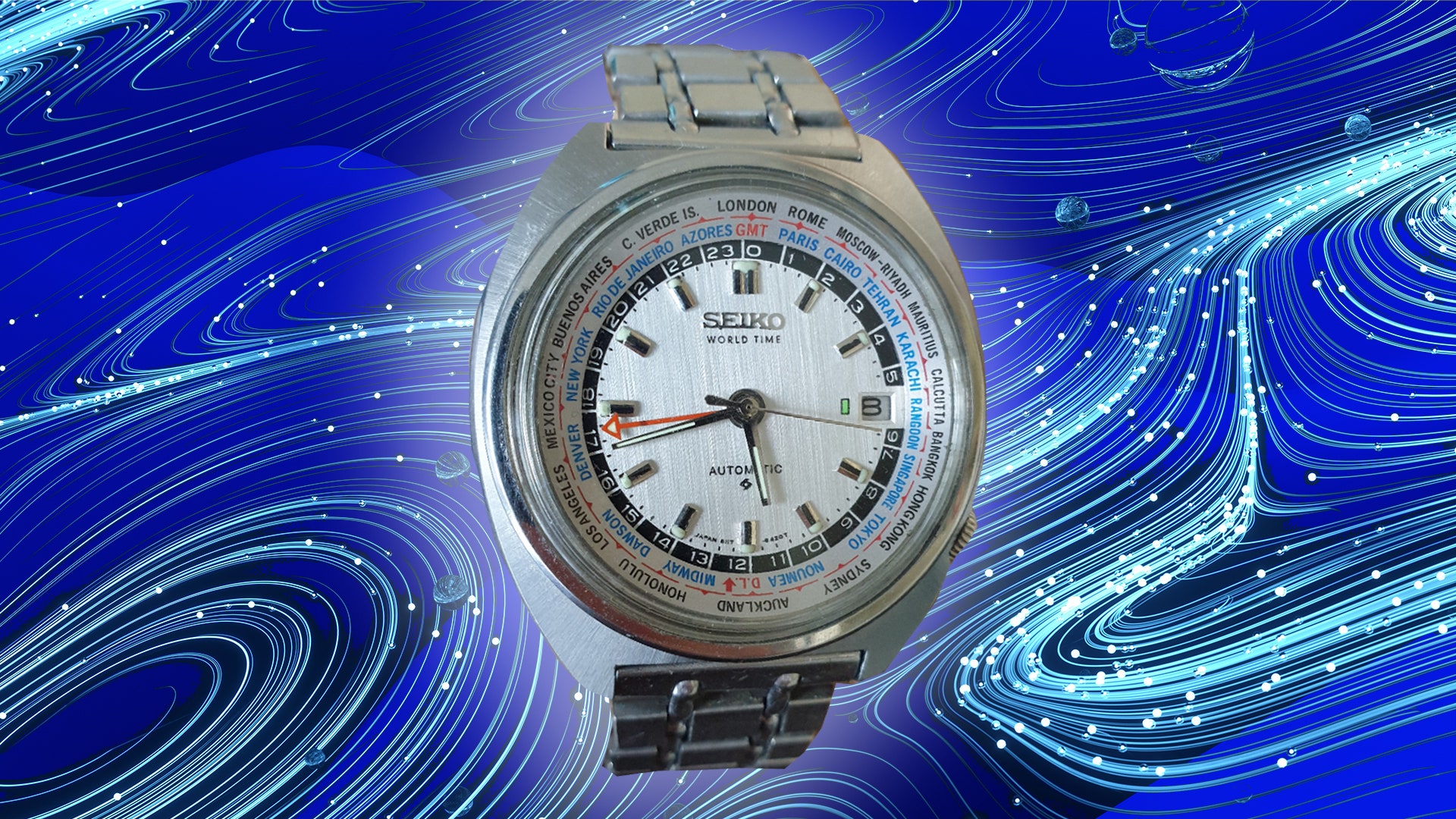All the watch world loves a mistake, from the tiny spacing error on a Rolex Daytona that creates a so-called “APH” dial and dramatically inflates the value to sloppy quality control on a brand’s press sample that makes us collectively roll our eyes and wonder how on earth they missed it. Mistakes, whether in the watch itself or in the marketing fluff that accompanies it, allow us to flex our superior knowledge or eye for detail and generally feel smug.
But not all mistakes are what they seem. Take, for example, Seiko’s 6117 line of world timers, produced in 1968 to replace the ref 6217 that celebrated the Tokyo Olympics of 1964. They work on the basis of a revolving city ring around the outside of the dial and a fixed 24-hour hand. Placing the desired city at 12 o’clock will allow you to read off the related time on the charmingly shaped red “dog-leg” hand. I own one of these, and a great watch it is too, but when I began my search I came across two versions of the watch. One has GMT aligned with London, as you might expect, and the other, often referred to as an “error dial”, has London aligned with Paris an hour ahead. Not being able to live with such an anomaly, I chose the more expected alignment, but the alternative always puzzled me. It was a big “error” to make across a lot of watches. Granted, the world of the late 1960s was not as connected as it is now, but surely a nation as developed as Japan should know what time it is in London?
Thing is, minor quirks of history can easily get lost in the passage of time. Back in 1968, the UK government, under pressure from the road safely lobby, held an experiment whereby the clock went forwards in March and did not turn back until October 1971. For three years we had permanent British Summer Time (GMT +1). Despite an 11.7 per cent fall in road fatalities during this time, the experiment was shelved and forgotten. Mention 1968 and people may recall the Prague Spring or the assassination of Martin Luther King, but three years of BST doesn’t register.
For a watch launched in 1968, Seiko had to accurately reflect the world time zones as they were. We should congratulate them for even being aware of this domestic aberration, and, of course, post-1971 the city rings of the 6117 went back to their familiar pattern. The “error dial” should rather be termed a “historic dial”, reminding us of a part of our past that we have now forgotten. The 6117 is a fantastic series to collect, including classic GMT styles as well as world timers, all at well under £1,000. For fans of the quirky, the good news is that most buyers are like me, opting for the classic city ring alignment, so the original BST can often be even more of a bargain.
This official Star Wars watch costs $150,000 – and it’s brilliantly insane
How to buy a lust-worthy vintage watch for under £1,000
Tom Holland’s watch collection is worthy of superhero status

